Ron Mullinax's Blog
September 13, 2018
WWE Champions 2018

Another year of WWE. Another roster WWE Champions has sent shocking waves to the world. Their technical skills, speed, and precision helped them become champions and leave stories spectators surely would remember. Here’s a review on the champions’ moves:
Shinsuke Nakamura
After the double countout during his fight against AJ Styles, Shinsuke Nakamura challenged Jeff Hardy for the WWE United States Championship, which took place on Sunday, July 15, 2018, at the PPG Paints Arena in Pittsburgh, Pennsylvania. In just a matter of 4 seconds, Nakamura won the title.
Nakamura opened the bout with Kinshasa and a low blow. Struggling to stand, Hardy called for the bell, saying he was ready to take on Nakamura. But he already lost with a pinfall.
Alexa Bliss
In the history of WWE, Alexa Bliss is the first woman to win in WWE SmackDown and WWE Raw Women’s Championship. While Becky Lynch, Charlotte Flair, Natalya, and Tamina were busy fighting each other for the Money in the Bank suitcase, Alexa came out of nowhere and climbed the ladder herself, claiming the title for the women’s ladder match. She’s about to face Ronda Rousey on August 19, 2018, for the SummerSlam.
Shayna Baszler
The Queen of Spades Shayna Baszler fought against Ember Moon for NXT TakeOver: New Orleans. Shayna, who fixed her dislocated shoulder by slamming it onto the ring post, was about to lose her chance as Ember was about to end the match with her Eclipse finisher. But Shayna Baszler welcomed Ember Moon with a rear naked choke and never let go until Ember passed out. Despite Moon’s vow, Baszler still brought home the title.
The B-Team (Bo Dallas and Curtis Axel)
In a poll created by WWE, 73 percent voted for the Deleters of Worlds, Matt Hardy and Bray Wyatt, to reign the Tag Team Championship. On July 15, 2018, the B-Team proved itself worthy of the title. It began with Axel causing a distraction to break a double-team maneuver and ended with Dallas’s hangman’s neckbreaker—an incredible teamwork that led to the team’s first reign.
Know more about the WWE champions and other remarkable events in professional wrestling through my blog.
References
Banerjee, Anirban. 2018. “Extreme Rules 2018 United States Championship Match: Jeff Hardy vs Shinsuke Nakamura winners, video highlights and analysis.” Sportskeeda, 2018 Posted July 16, 2018. Accessed July 19, 2018. https://www.sportskeeda.com/wwe/extreme-rules-2018-united-states-championship-match-jeff-hardy-vs-shinsuke-nakamura-winners-video-highlights-and-analysis
Bill, Pritchard. 2018. “The B Team Wins RAW Tag Team Titles At WWE Extreme Rules.” Wrestle Zone, July 15. Accessed July 19, 2018. http://www.mandatory.com/wrestlezone/news/975511-the-b-team-wins-raw-tag-team-titles-at-wwe-extreme-rules
McIntosh, Whitney. 2018. “Alexa Bliss wins the women’s Money in the Bank match after shoving Becky Lynch.” SB Nation, June 17. Accessed July 19, 2018. https://www.sbnation.com/wrestling/2018/6/17/17473398/wwe-money-in-the-bank-womens-ladder-match-alexa-bliss
Nissim, Mayer. 2018. “WWE Champions: A complete list of every title holder on Raw, SmackDown, NXT and 205 Live.” Digital Spy, July 16. Accessed July 19, 2018. http://www.digitalspy.com/tv/wwe/feature/a842520/wwe-champion-title-current-nxt-raw-smackdown-tag-womens-us-intercontinental-uk-belt/
Rueter, Sean. 2018. “NXT TakeOver: New Orleans results – One-armed Shayna Baszler chokes out Ember Moon to become Women’s champ.” Cageside Seats, April 7. Accessed July 19, 2018. https://www.cagesideseats.com/wwe/2018/4/7/17211164/nxt-takeover-new-orleans-results-one-armed-shayna-baszler-chokes-out-ember-moon-win-womens-champ
The post WWE Champions 2018 appeared first on Ron Mullinax.
September 6, 2018
The Rise of the Women of Wrestling
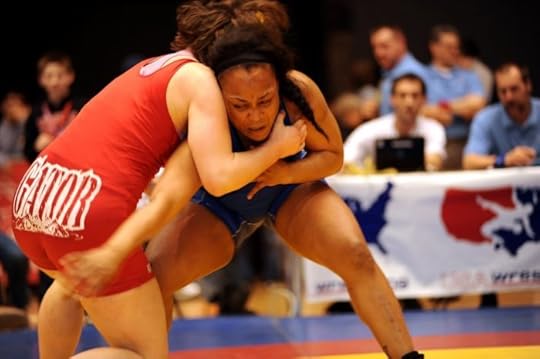
As of this writing, women of wrestling are experiencing a surge of success. Their matches have now become the main events—take the all-female edition of WWE’s Royal Rumble last January, for example. River City Wrestling founder notes how the sport has evolved from being what he considers “bra and panty matches.”
Wrestling has seen rising numbers of girls stepping into the ring as early as high school—according to the National Federation of State High School Associations (NHFS), there were as many as 14, 587 female high school students engaging in wrestling from 2016–17. Last July 9, a three-day all-girls wrestling camp was held in Iowa to encourage young girls to pursue the sport.
For the women of wrestling, the journey to success has been a tough one. Federations such as the WWE initially treated their female talents as side pieces. Luckily, times are changing. Aside from the Royal Rumble, the organization also launched the Mae Young Classic—a female-exclusive tournament named after the pioneering trailblazer and Hall of Famer.
Television dramas, such as Netflix’s GLOW (based on the Gorgeous Ladies of Wrestling), have also highlighted female wrestlers’ struggles. Set in the 1980s, the show depicts how female wrestling wasn’t as celebrated as it is in this current century. In an article for the San Antonio Express News, neophyte wrestler Alex Garcia acknowledges the stigma associated with female wrestling. “Women have to do 10 times more to be taken seriously,” she says. Beyond the flashy outfits they wear, the skills and athleticism female wrestlers display are giving their male counterparts a run for their money; they’re more than just pretty faces to look at during matches.
Although there’s still much more room for improvement, the women of wrestling continue to tough it out. Former Dallas Cowboys cheerleader-turned-wrestler Tanea Brooks is very appreciative of the fact that female wrestlers’ drive and ambition in the ring are shown. “(They’re) making huge sacrifices and working out day in and day out,” she says. With all this progress, there’s nowhere to go but up for them.
What are your thoughts on the women of wrestling? I’d be very interested to hear them. Just leave a message below so we can get the conversation started. You may also share them on Facebook, Twitter, and Goodreads. For more on wrestling, you may check out my book, Fritz von Erich: Master of the Iron Claw, which follows the life of one of the sport’s greats.
References
Dasgupta, Riju. 2018. “Women’s Wrestling is No Longer a Sideshow at WWE.” The Quint. July 10. Accessed July 12, 2018. https://www.thequint.com/sports/olympic-sports/women-wrestling-netflix-glow-ronda-rousey
Goodwin, Cody. 2018. “Iowa Wrestling Hosts First All-Girls Camp to Boost Conversation on Girls in the Sport.” Hawk Central. July 9. Accessed July 12, 2018. https://www.hawkcentral.com/story/sports/college/iowa/wrestling/2018/07/09/iowa-wrestling-program-hosts-first-ever-all-girls-camp-hopes-furthering-girls-wrestling-conversation/768929002/
Guzman, René. 2018. “Women’s Wrestling Now Spotlights Athleticism and Skills over Looks.” San Antonio Express News. July 3. Accessed July 12, 2018. https://www.expressnews.com/entertainment/article/Women-s-wrestling-now-spotlights-athleticism-13047698.php.
Walker, Rob. 2018. “TV’s All-Female Wrestling Drama Glow Blazes a Trail.” The Guardian. June 23. Accessed July 12, 2018. https://www.theguardian.com/tv-and-radio/2018/jun/23/glow-all-female-hit-blazes-trail-britney-young-netflix.
The post The Rise of the Women of Wrestling appeared first on Ron Mullinax.
August 30, 2018
The Birth of WWE World

The World Wrestling Entertainment or WWE is one of the most, if not the most, powerful and popular professional wrestling organization in the world. Known for its larger-than-life wrestling superstars and over-the-top storylines, the WWE’s own rise to prominence seems scripted, just like their sold-out shows.
National Wrestling Alliance (NWA)
The professional wrestling landscape during the late 1940s to the early 1960s can be described as a group of different promoters running their own shows and events in their own territories, but with one unanimous Wrestling World Champion under the National Wrestling Alliance.
NWA promoters were frequently pulling power moves against their rivals to gain the upper hand on the other promoters.
In one instance, promoters voted to have Lou Thez as the champion to weaken the powerful northeastern promoters. As the new champion was not popular in the northeast, promoters in the area started losing some of their influence in the growing entertainment industry.
World Wide Wrestling Federation (WWWF)
The northeastern promoters decided to do something about it. Thus, in 1963, they formed the World Wide Wrestling Federation to rival the NWA.
At the helm of WWWF were Vince McMahon Sr. and Toots Mondt. One of WWWF’s first matches was pitting former NWA champion Buddy Rogers against Bruno Sammartino, with the latter becoming the first-ever champion of WWWF.
WWWF was renamed to The World Wrestling Federation after the death of Mondt in 1976. During these times, the promotion’s most famous wrestlers where Sammartino and new champion, Pedro Morales.
From Sr. to Jr.
However, as the ’80s rolled along with the advent of cable TV, Vince Sr. sold his company to his son, Vince Jr. The younger Vince McMahon knew that wrestling as a regional promotion was no longer viable.
He set his goal to conquer the whole of the wrestling world. Vince went on to whirlwind promotional tours. He resigned Hulk Hogan as the organization’s signature star, and he started signing wrestling stars from smaller promotions.
All these were costing Vince a lot of money. As a make-or-break for the company, Vince decided to hold an event—the first ever WrestleMania.
The groundbreaking event was truly the first successful pay-per-view event of the wrestling industry to make money and it helped WWF to gain a significant foothold in the industry.
WWF’s remaining competitor was Jim Crockett and his Starrcade. With the backing of Ted Turner and his TNT network, NWA was renamed to World Championship Wrestling and stood as the main rival for WWF.
Monday Night Wars
As WCW got into full swing, McMahon’s WWF was losing in ratings battle. It was also during that time that Vince was battling a lawsuit for a steroid trail.
And, with many superstar wrestlers switching allegiance from WWF to WCW, they needed to make changes to survive. With the help of new booker Vince Russo, WWF went with more adult and edgier content to counter the family-friendly environment of WCW.
With gimmicks like bringing in “Post Ear Bite” Mike Tyson and developing younger wrestlers like Steve Austin and The Rock, wrestling fans got hooked on WWF’s Raw.
WWF started gaining back viewers and, coupled with Ted Turner losing control of TNT, WCW was sold to Vince McMahon in 2001. Finally, his dream of controlling the world of wrestling finally came true.
However, in 2002, the company lost its rights to the WWF name to World Wildlife Fund. Thus, it was renamed as the World Wrestling Entertainment or WWE.
Want to know more about the world of wrestling? Keep reading my blog posts and also check out my book, Fritz von Erich: Master of the Iron Claw. You can also leave your comments below or contact me through Facebook, Twitter, and Goodreads.
References:
Cohen, Eric. 2017. “History of the WWE (World Wrestling Entertainment).” ThoughtCo. Accessed July 12, 2018. https://www.thoughtco.com/history-of-the-wwe-2787159.
WWE. 2012. “The Epic History of WWE.” Classics. Accessed July 12, 2018. https://www.wwe.com/classics/history-of-wwe.
The post The Birth of WWE World appeared first on Ron Mullinax.
June 29, 2018
Wrestling Origins
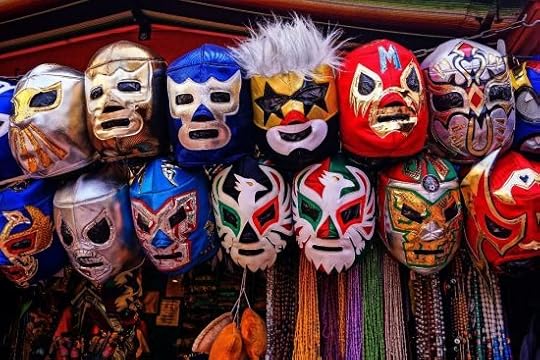
The history of professional wrestling in the United States owes its current style to the brave kings, soldiers, and heroes of ancient civilizations. The wrestling origins are traced back on those days when men with unbelievable strengths were raised on pedestals and sat on the highest thrones. It was more than 5000 years ago when the Sumerian civilization started what we call today as one of the oldest sport history has ever recorded: wrestling. The Epic of Gilgamesh proves this point. It tells the adventures of Gilgamesh and his beast of a companion, Enkidu. The epic poem was contained in tablets uncovering some of the brave scenes where Gilgamesh wrestled with fellow strong men and beasts.
Ancient Egypt was also responsible for the wrestling origins of today’s stances, rules, and refereeing codes that serve as basis for modern wrestling. The walls within the ancient tombs of Beni-Hassan revealed intricate drawings of 400 wrestling pairs. This rich information helped wrestling thrive throughout the centuries.
Meanwhile in the north, ancient Greeks viewed wrestling as a science and divine art. Think of ancient wrestling as today’s basketball equivalent, where in every street you can see men and women play. But the mechanics back then were much different. To defeat the enemy, one must be able to throw him or bring him down on his back, chest, hips, knees, and elbows.
In the ancient Olympic games, wrestling was the most anticipated sport since it became the deciding factor to choose the pentathlon winner. Although wrestling is no longer included in the modern pentathlon, it remains to be one of the core sports in the biggest athletic event in the world.
The Roman empire had similar regard toward wrestling. Their enthusiasm was all thanks to the Estruscans, a powerful and wealthy Latin civilization who developed and restored the Greek games, which contributed to the Romans’ rich history of wrestling. Soldiers, aristocrats, and shepherds found great pride and entertainment when they fight and win wrestling matches.
The Roman soldiers train in palestras, a wrestling school or gymnasium of ancient Greek and Roman origin. This rigorous training led them to win many battles and attain military success. Unfortunately, after the fall of the Roman empire, these venues were reduced into dusts around 500 AD.
This drought ended only over a hundred years ago when wrestling was officially recognized as a professional sport. This was due to the struggle between the leaders of the church and key people of the state during the Middle ages that prevented this classic sport to flourish in the next thousand years. It was only in 1830 that France began the history of professional wrestling as they paved the road for its restoration during the Renaissance period.
This time, men from humble ranks participated in the challenge of strength as they travel around France under the direction of Jean Exbroyat. Since then, professional wrestling spread throughout Europe and later introduced to the colonized continents.
Not long after, the above-mentioned wrestling origins inspired the wrestling matches that continue to exist today. In modern America, wrestlers enthusiastically embraced the art of the ancient Greek of freestyle wrestling inside the ring. And the sport has flourished in the modern age. Up to this day, men and women who compete in a wrestling match are regarded as the strongest beings on the planet.
New to the world of wrestling? Keep on reading! Visit Ron Mullinax’s blog at www.vonerich.net/org or buy his book, Fritz von Erich: Master of the Iron Claw, already available at the leading book sellers. See more of the author’s works by following him on Facebook, Twitter, and Goodreads.
References:
Bob Dellinger, 2011. “Wrestling in the USA.” National Wrestling Hall of Fame. Accessed on May 25, 2018. https://nwhof.org/stillwater/resources-library/history/wrestling-in-the-usa/.
United World Wrestling. 2018. “History of Wrestling.” Accessed on May 25, 2018. https://unitedworldwrestling.org/organisation/history-wrestling
The post Wrestling Origins appeared first on Ron Mullinax.
June 22, 2018
Greatest Wrestling Rivalries of WWE History

Wrestling rivalries is undoubtedly the engine that powers professional wrestling across different promotional platforms. They keep the fans coming back for more action, drama, and breathtaking storylines. From the legendary feuds of Rick Flair and Ricky Steamboat in WCW, to Hiroshi Tanahashi and Kazuchika Okada’s battle to the top in NJPW in Japan, feuds have shaped, revolutionized, and reinvented the faces of the professional wrestling scene and its governing companies.
While WCW, ECW, and other promotions have their own greatest feuds of all times, WWE, being the largest of the companies, holds some of the most entertaining, culture-shaping, and legendary wrestling rivalries ever witnessed. Below are seven that have somehow made an impact, not just inside the company, but ultimately, on the whole culture surrounding the industry:
Triple H vs. Mick Foley
This feud is said to have paved the way for what the wrestling entertainment is today. From the presentation of their promos, to their in-ring performances, this rivalry truly was revolutionary. The two first clashed at the 1997 King of the Ring, when they battled head to head during its final moments. Their feud had elevated over the following years and earned them highly anticipated headliners on numerous events. They managed to capture the audience’s attention through their bloody brawls involving chairs, cages, and even thumbtacks. The brawls sometimes lasted for a quarter of an hour and even took one fight out to the streets.
Lita vs. Trish Stratus
The Lita-Stratus rivalry lead to the very first match in the main event that featured women, in WWE’s flagship show, Raw. The rivalry changed the way women’s matches are viewed by their electrifying maneuvers that involved risky dives through the ropes and back–breaking, off-the-turnbuckle reflexes. Their feud lasted for years. It elevated the notoriety of women, which gave them more airtime to level with their male counterparts.
Undertaker vs. Kane
A sibling rivalry is such an entertaining feat, even more fascinating when it involves the brothers of destruction, who at that time, dominated the league. Undertaker initially refused to fight his demonic half-brother, until Kane locked him in a casket and set it on fire. This outraged The Undertaker, which led to several encounters. He eventually defeated Kane in WrestleMania XIV with three Tombstone Piledrivers—Undertaker’s signature move.
The Hardy Boyz vs. Edge and Christian vs. The Dudley Boyz
This three-way feud is by far the best wrestling rivalry in the tag-team division in WWE history. It was from this match-up that the TLC match originated—tables, ladders, and chairs. This rivalry created the most electrifying scenes the WWE community has ever seen—from-off-the-ladder acrobatics to the bone-breaking slams through the tables. The rivalry has truly redefined how WWE Universe viewed ladder matches in their era.
Steve Austin vs. Vince McMahon
Nothing was more entertaining in wrestling history than the employee who stepped up to challenge his boss. The “Stone Cold vs. Mr. McMahon” match was nothing like the wrestling world has ever seen before. The whole world was left in shock when Steve Austin gave Vince McMahon a vicious Stone Cold Stunner in front of thousands of fans. That became a pivotal moment for the WWE industry. More fans then started tuning in to WWE’s Monday Night Raw, surpassing their competitor in weekly ratings.
The Rock vs. Steve Austin
Many would consider this feud the greatest rivalry of WWE history. The rivalry credits its success not only to the men’s unmatched in-ring skills, but also to their storyline-selling prowess. The two then-emerging superstars always played their characters well, which created exciting build-ups and was greatly responsible for the success of Wrestlemania 17. It was during the time when WWE needed the right performers that these two men rose to prominence, and thus, they contributed hugely to the company. These two legends brought something to the arena that fans might never see again.
Shawn Michaels vs. Bret Hart
And finally, the feud between two wrestling legends that shaped professional wrestling. The Michaels-Hart rivalry is one feud that will always be remembered. These guys have fought over ladder matches and iron-man matches and was involved in the most controversial match in wrestling history—The Montreal Screwjob. Two guys with different fighting styles—one was textbook-technical and the other was unconventional-charismatic—were never a bore inside the ring. And their rivalry will be remembered as the best in WWE history.
Wrestling, as an industry, would not have been successful if not for the great wrestling rivalries of legendary talents. They have all the elements that heightens each fan’s wrestling experience. And aside from their soap opera-like impact on the crowd, each feud also elevates each one’s career, and to some extent, takes them to a whole new level. And few of them not only managed to change each other’s notoriety, but had also significantly altered the course of a company’s history.
I hope you enjoyed my top seven greatest rivalries of WWE history. I’d like to know some of the memorable feuds that you also enjoyed. Please do let me know in the comments section below. You might also like to check my book, Fritz Von Erich: Master of the Iron Claw. It features the story of one of the greatest wrestlers of all time. You can also reach me out on Facebook, Twitter, and Goodreads.
References
Cartelli, Lance. 2017. “The 21 Most Legendary WWE Rivalries of All Time, Ranked.” GameSpot, February 22. Accessed May 24, 2018. https://www.gamespot.com/gallery/the-21-most-legendary-wwe-rivalries-of-all-time-ra/2900-1098/
Marshall Law. 2010. “The Great Feuds—Mick Foley vs. Triple H.” Last modified June 4. Accessed May 24, 2018. https://marshalllaw2.wordpress.com/2010/06/04/the-great-feuds-mick-foley-vs-triple-h/
The Top Tens. 2018. “Top Ten Best WWE Rivalries.” WWE. Accessed May 24, 2018. https://www.thetoptens.com/best-wwe-rivalries/
The post Greatest Wrestling Rivalries of WWE History appeared first on Ron Mullinax.
June 7, 2018
Effective Transitions Gleaned from Wrestler Actor
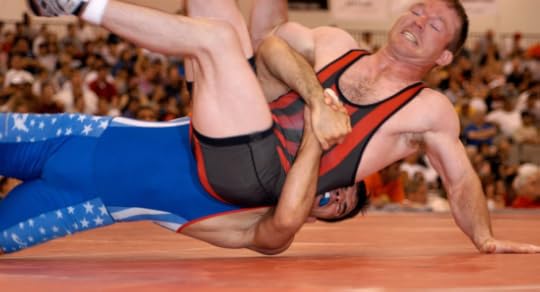
Wrestlers are used to dramatic stories, such as the feuds between fighters developed in wrestling scripts as promotional strategy. During the match, wrestlers perform in a highly theatrical way, yielding their own unique styles. These styles take them to popularity (either by acceptance or rejection).
Similarly, wrestlers-turned-actors find themselves taking on a role within a story. But not with a live audience; rather, a crew of film experts. A scene could take many repetitions and more hours to pack up. Acting while wrestling prepares the wrestler for film acting: from performing what wrestlers usually do in the ring and growing into a strong character, either protagonist or antagonist, and onto landing the lead role. A quick review on three wrestler actors would illustrate transitions from wrestler to actor:
First. The Rock (a.k.a. Dwayne Douglas Johnson), who is now one of the higher-paid wrestlers-turned-actors, has attracted a following for being hardworking and versatile. These are apparently results from decisions he’s made to be surrounded by brilliant people from whom he can learn the workings of the business—from acting to marketing and on to directing and producing—so that he would have a considerably longer shelf life in the entertainment industry.
Second. John Cena (a.k.a. John Felix Anthony Cena, Jr.), appears to be following the example set by The Rock, while going through transitions from wrestler to actor. He built his first fan base from his days as a rapper. Since then, he has continued to attract media attention and been active in charity works.
Third. Stone Cold Steve Austin (a.k.a. Steven James Anderson) suffered a spinal injury in 2000, which pushed him to retire from wrestling. He has since pursued acting roles in TV and in film. Through ten selected films, he has somehow redeemed his name from his history of domestic violence.
In effect, the positive wrestler actor influence all over the world, could be inferred as the following:
Wrestling can be an opening into a career in acting.
If you are open to change with lifelong learning skills, you can always find more rewarding experiences.
Surround yourself with people of excellence if you want your career to be long-term.
Do you want to add any other positive influences from wrestler-actors to this list? Feel free to share that in the comments section below. You can also connect with me on other channels like Facebook, Twitter, and Goodreads. Don’t forget to check my book Fritz Von Erich: Master of the Iron Claw to learn more about wrestling.
References:
Inbound. 2018. “John Cena: Actor and WWE Superstar.” Speakers. Accessed May 23, 2018. https://www.inbound.com/speakers/john-cena
Oprah.com. OWN Master Class. Season 5, episode 504, “Dwayne Johnson’s Decision to Quit Wrestling and Pursue Acting.” Aired 11/15/2015, on׀ TV-14. Accessed May 23, 2018. http://www.oprah.com/own-master-class/dwayne-johnsons-decision-to-quit-wrestling-and-pursue-acting-video
Russel, Bradley. 2018. “From The Rock to Dave Bautista, here’s the 10 best wrestlers-turned-actors.” Gamesradar+. April 6. Accessed May 21, 2018. https://www.gamesradar.com/wrestlers-turned-actors/
The post Effective Transitions Gleaned from Wrestler Actor appeared first on Ron Mullinax.
June 1, 2018
A Summary of Best Wrestling Books Written Ever
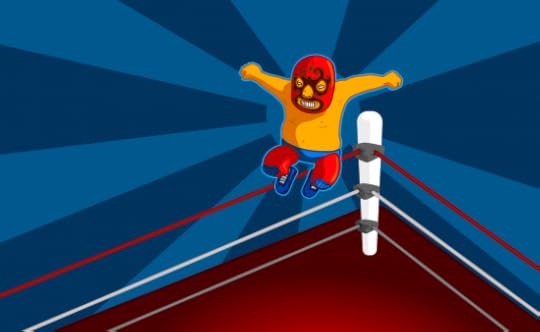
There have been countless books on wrestling that have helped enthusiasts enrich their knowledge. Some of them are downright poor, but some are actually great when it comes to offering valuable insights about wrestling. The latter ones are ideal for somebody who’s trying to delve deeper into the world of wrestling.
Here’s a summary of four such must-read wrestling books.
The Stone Cold Truth
Steve “Stone Cold” Austin was the poster boy of the Attitude Era of World Wrestling Entertainment (WWE). The Stone Cold Truth depicts perfectly the life of Austin, the truth about him and his other nickname, the Rattlesnake. The book highlights Austin’s fatherless childhood in Texas, his struggles at WCW, and the turns and twists of the poster boy’s career. The book also comprises of a chapter dedicated to Austin’s inputs and his own opinions on wrestling, especially how he detests scripted in-ring promos and his thoughts on the same. This is one of the must-read wrestling books about the man who made turnbuckle beer-swelling and obscenities cool. Trivia: Aside from the two mentioned nicknames, Austin is also known as the Bionic Redneck, Stunning, and Superstar.
The Rock Says . . .
This book portrays the journey of Dwayne “the Rock” Johnson from a pineapple-haired wrestler to a top-grossing actor. The Rock Says . . . describes Johnson’s upbringing, his not-so-successful days, and his monetary troubles along with several happenings throughout his life. By reading this book, you get to take on a journey with the champ and gain a better understanding of “what the Rock is cooking.”
Wrestling’s 101 Strangest Matches
Written by Oliver Hurley, this book examines why pro wrestling is considered as one of the strangest industries ever. This book, penned by the grappling journalist, doesn’t actually keep the key premise a secret. Instead, this is one of those best books on wrestling that can be surely judged by their covers. It’s the original content of the book that makes it a must-read, mentioning 101 unique descriptions of wrestling’s weirdest bouts.
Wrestling with the Devil
Any compilation of great wrestling books would be incomplete without a mention of Wrestling with the Devil. Lex Luger is surely a classic example of someone who has seen life’s tremendous rise and fall. Evolving as a wrestler and beaten by a critical spinal injury that left him on a wheelchair, the book describes the truth about Luger. Reading this book may change the views of those who think Luger as somebody who was lucky to stumble into the world of wrestling and share the ring with the greats.
These are just few of a handful of wrestling books that you can read, but what I’ve listed were, I believe, helpful to you or to someone who’s interested in the sport. So if someone asks you to recommend a wrestling book, you know what to say.
Make sure you read at least one of the books I mentioned on this blog, and don’t forget to share this article with a friend. If you think I missed something, let me know in the comments section below. Check out my book, Fritz Von Erich: Master of the Iron Claw, to learn more about wrestling and follow me on Facebook, Twitter, and Goodreads for more updates.
References
Roberts, Leo. “12 Best Wrestling Books Every Fan Should Read.” BroBible. Accessed May 21, 2018. http://brobible.com/gear/article/best-wrestling-books/.
Kennedy, Jamie. 2016. “20 Best Wrestling Books Ever.” WhatCulture, May 18. Accessed May 21, 2018. http://whatculture.com/wwe/20-best-wrestling-books-ever.
The post A Summary of Best Wrestling Books Written Ever appeared first on Ron Mullinax.
May 24, 2018
Wrestling Injuries: Treatment and Prevention
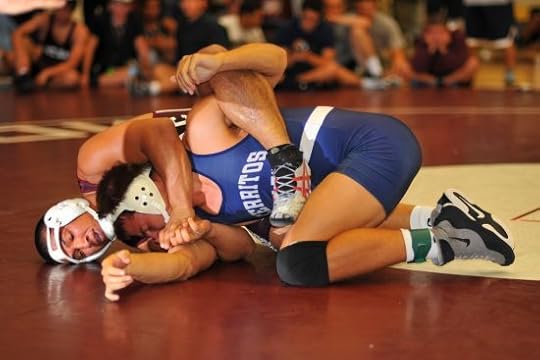
The realm of wrestling is a sport where participants in the squared circle are heavily prone to suffer serious injuries. From tearing muscles to awkward landings, many careers have been cut short because of real wrestling injuries. Perhaps the illusion of suffering and pain without participants actually trying to injure each other has made it a great sport. However, several wrestling injuries can be prevented to a great extent and treated as well. Here’s a list of the most common methods.
Prevention
Strength training. The utilization of strength training can effectively lower the risk of damage because it works on rectifying imbalances to various muscle groups. It puts a dynamic load on different joints, making physiological alterations in the bones, muscles, and connective tissues, including tendons and ligaments.
Improving flexibility. Wrestling is a demanding sport where participants who are more flexible enjoy advantages over others. Being flexible can help wrestlers become successful in the squared circle. In addition, excellent flexibility improves the chances of preventing injuries from wrestling.
Adopting proper techniques. It’s important for wrestlers to adopt proper techniques accurately to reduce the chance of wrestling injuries. They should always train under the guidance of a qualified and skilled specialist in wrestling safety guidelines and current safety practices.
Treatment
Shoulder injuries. Shoulder injuries occur when wrestlers throw each other on the ground. Twisting the shoulder often triggers shoulder dislocation, shoulder separation, and rotator cuff injuries. In such cases, the wrestler needs immediate medical attention and follow-up treatment later that varies from physical therapy to invasive treatments for severe injuries.
Knee injuries. Knee injuries can affect either the interior or exterior of both knee and kneecap. These injuries are known as the ACL and the PCL. These can impact a wrestler’s ability to perform in the long-term. While immediate medical attention is necessary, proper treatment and physical therapy over a longer period are equally important.
Concussions. This is one of the most common injuries in wrestling, and it does happen occasionally. A significant numbers of wrestlers suffering from concussions in the ring can be seen every year. These generally occur from head-on collisions or throws. If this happens, the wrestler should ideally stay out of the mat for some time. Not allowing a wrestler to recover from a concussion before going back to the ring may lead to further brain injury.
For muscle strains, ligament sprains, and other minor injuries and bruises suffered by wrestlers, RICE (rest, ice, compression, elevation) is often used as the first line of treatment. If used correctly within the first 24 to 48 hours after an injury, it can ease out the pain, reduce swelling, and promote flexibility.
Do you know any other common injury, how to prevention it, and how they could be treated? Feel free to share in the comments section below. You can also connect with me on Facebook, Twitter, and Goodreads to keep the conversation going. Check my book, Fritz Von Erich: Master of the Iron Claw, to know how wrestling’s most fabled names handled injuries.
References
Wrestle Club. 2018. “Common Wrestling Injuries—Treatment and Prevention Tips.” Accessed January 27, 2018. https://wrestleclub.com/common-wrestling-injuries/.
The Staff Doctor. 2017. “5 Most Common High School Wrestling Injuries.” Affiliated Healthcare Centers, Inc, February 12. Accessed January 27, 2018. https://affiliatedhealthcare.com/5-common-high-school-wrestling-injuries/.
The post Wrestling Injuries: Treatment and Prevention appeared first on Ron Mullinax.
May 17, 2018
Wrestling in Olympics: The past, the present, and the future
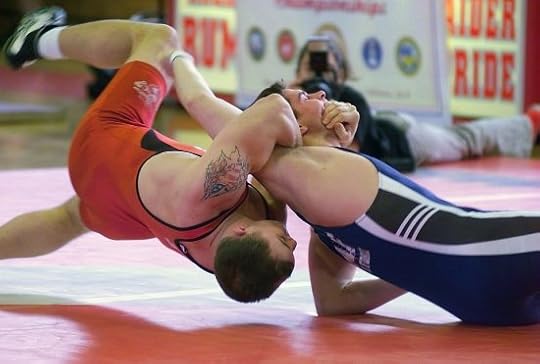
Any history of wrestling in Olympics would remain incomplete without the mention of ancient Greeks where young men belonged to wrestling schools or palaestras, as the center point of their social life. Illustration of this sport on Greek coins and vases was common throughout every period of ancient Greece.
When talking about the history of wrestling in the Olympics, you will trace it back to the first Olympic Games in 1896 (held in Athens). The style the Olympics’ organizers included was Greco-Roman wrestling, which was believed to be a carryover from the ancient wrestling styles. Except for the 1900 Summer Olympics where this tense combat sport was missing from the program, wrestling has featured in every Olympic program. After the Greco-Roman style, freestyle wrestling was added to the games as the second wrestling event in 1904. Wrestlers competing in the freestyle events were permitted to lift, push, and trip their opponents using their legs, in addition to holding them (the opponents) below or above the waist. The year 2004 witnessed the introduction of women’s freestyle wrestling competition.
Today, there’re two types of wrestling in the Olympics namely Greco-Roman and freestyle. Though the later had far less tradition and history compared to the former, it did gain great popularity, having developed as a distinct type of professional entertainment performed at festivals and fairs across the United States and Great Britain.
Under FILA rules, both Greco-Roman and international freestyle types are similar, the goal being to press or throw the opponent on his/her back so that his/her shoulder blades get in touch with the ground simultaneously. The competitors start with meeting on a large pad and taking holds from standing positions. However, Greco-Roman style doesn’t allow competitors attacking below the opponent’s waist. As wrestling is conducted within a circular ring without any protective gear or equipment, wrestlers use different rapid techniques to bring the opponent down.
Because of the vivid history of wrestling in Olympics, it was a big shock for the world in 2013 when the headlines said that there’ll be no wrestling in Olympics in the future. This decision made FILA (the international governing body for wrestling) take up a rigorous six-month campaign aimed at reshaping the sport and revamping the organization to help it reclaim its Olympic status. However, after seven months of this decision, the IOC executive board realized its mistake and the decision to remove wrestling from the “core” sports list was called off. For the games to be held in 2020 and 2024, wrestling got reinstated as an Olympic sport.
What’s your thought on history of wrestling in Olympics? Do let me know in the comments section. You might also like to check my book out, Fritz Von Erich: Master of the Iron Claw. You can connect with me on social channels like Facebook, Twitter, and Goodreads.
References
Smith Shawn. 2016. “Grappling with the future: The story of how Olympic wrestling was saved.” NBCOlympics, August 19. Accessed January 26. http://www.nbcolympics.com/news/grappling-future-oral-history-how-olympic-wrestling-was-saved.
Olympic.org. “History.” Accessed January 26. https://www.olympic.org/wrestling-freestyle-equipment-and-history.
The post Wrestling in Olympics: The past, the present, and the future appeared first on Ron Mullinax.
May 10, 2018
A Rundown of Top Wrestling Styles

Apart from the glamour, the glitz, and the spotlight of the wrestling world, the sport can be best characterized by moving, faster confrontations, coupled with the ability to endure ’til the end. Some wrestlers like Bret Hart will use some fast-paced moves that don’t demand much strength but take advantage of his opponent’s momentum instead. He will use the ropes, but he isn’t clumsy on rebounding.
Perfect adoption of wrestling styles has taken the sport to the next level. Professional wrestling styles can be divided into two main categories—namely, Greco-Roman wrestling and freestyle wrestling. Here are brief descriptions of both styles and an additional wrestling style.
Greco-Roman wrestling
The first one of this list of wrestling styles is Greco-Roman wrestling. In this style, the competitors try to gain control over each other by using locks, throws, and clinching techniques. The holds can be executed only by using the upper body, with the final goal of pinning the opponent’s shoulders to the mat.
When a wrestler manages to attain that, “victory by fall” is declared. If not, the match continues ’til the end of regular time, and finally, the winner is decided on the basis of technical points earned. Except for the 1900 Paris Olympics, Greco-Roman style has been a consistent part of all Olympic Games since its inclusion to the ancient games in 1896.
Freestyle wrestling
The second most common among the top wrestling styles is freestyle wrestling. Here, the opponents try to gain control over each other by utilizing locks, throws, clinching techniques, and leg trips. Unlike the Greco-Roman style that only allows the utilization of the upper body, all freestyle holds can use legs in order to finally pin the shoulders of the opponent to the mat. Winning is declared either by fall or according to the technical points earned. Except for the 1912 Stockholm Olympics, freestyle wrestling has been consistently part of all Olympic Games since its inclusion in 1904.
Folkstyle wrestling
It falls under those styles of wrestling that are geographically based. Folkstyle, also known as collegiate-style wrestling, is a form of wrestling native to the United States. This style is practiced in educational institutions and in many wrestling clubs in the United States. What makes this style different from freestyle is that a wrestler has to hold the shoulders of the opponent to the mat for at least one second in order to earn a fall. In this style, wrestlers get rewarded with near falls that help them earn two or three points.
What’s your favorite style of wrestling? Feel free to share in the comments section below. Check out my book, Fritz Von Erich: Master of the Iron Claw, to learn more about wrestling styles. You can also share your thoughts with me on Facebook, Twitter, and Goodreads.
References
Reactor Wrestling Club. 2018. “Styles Of Wrestling.” Accessed January 29, 2018. http://www.radioactivewrestling.com/styles-of-wrestling/.
Wrestling Western Australia. 2017. “Wrestling Styles.” Accessed January 29, 2018. http://wrestlingwa.org/wrestling-styles/.
The post A Rundown of Top Wrestling Styles appeared first on Ron Mullinax.



